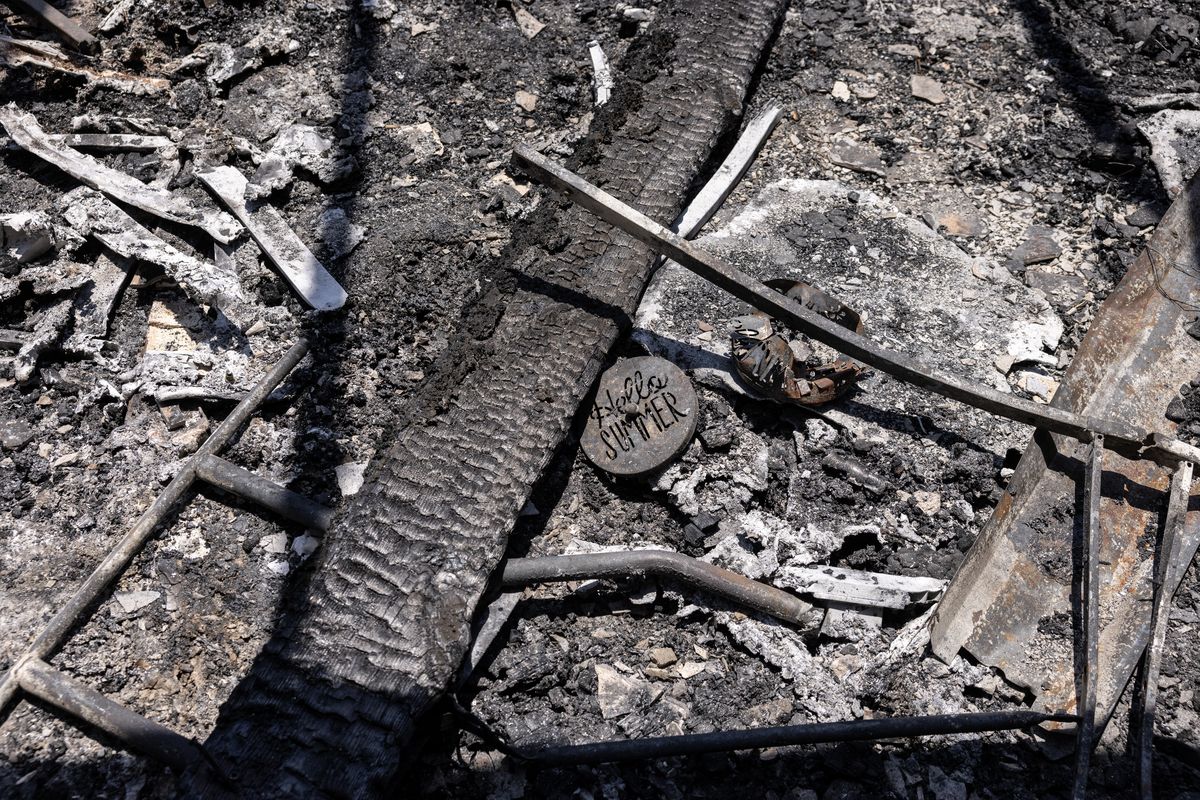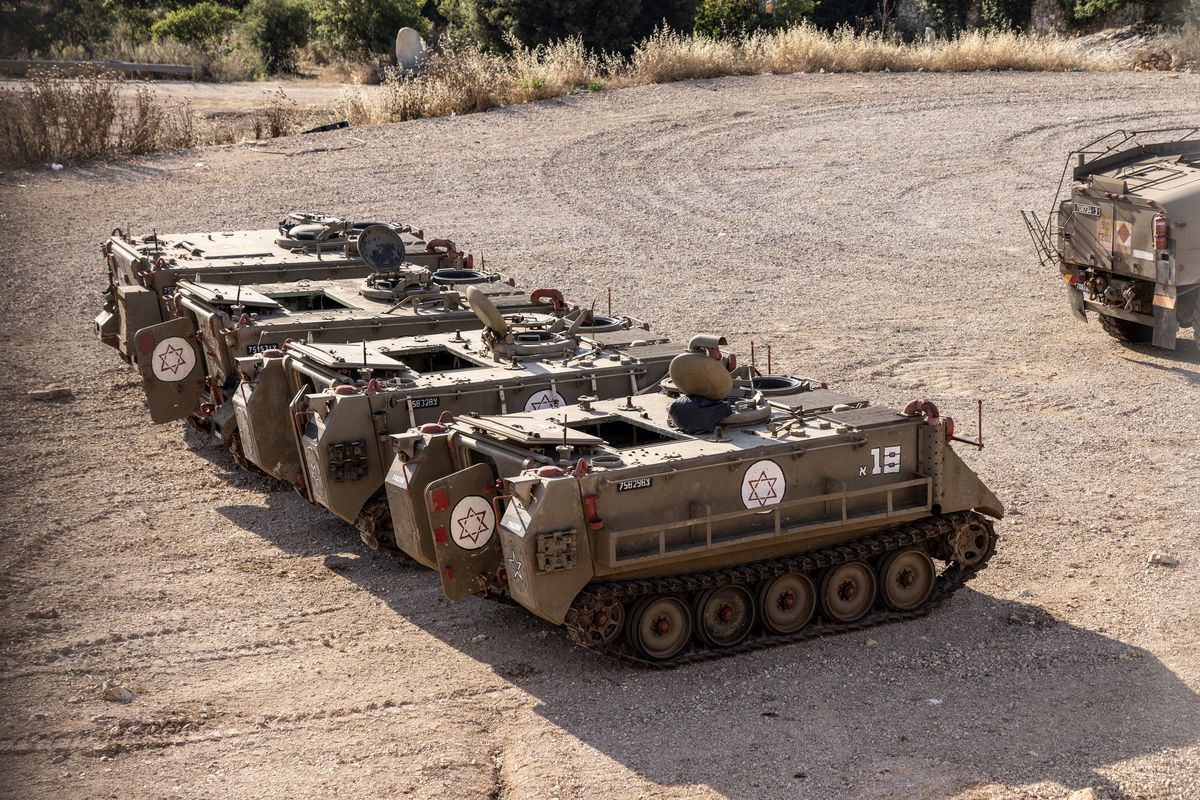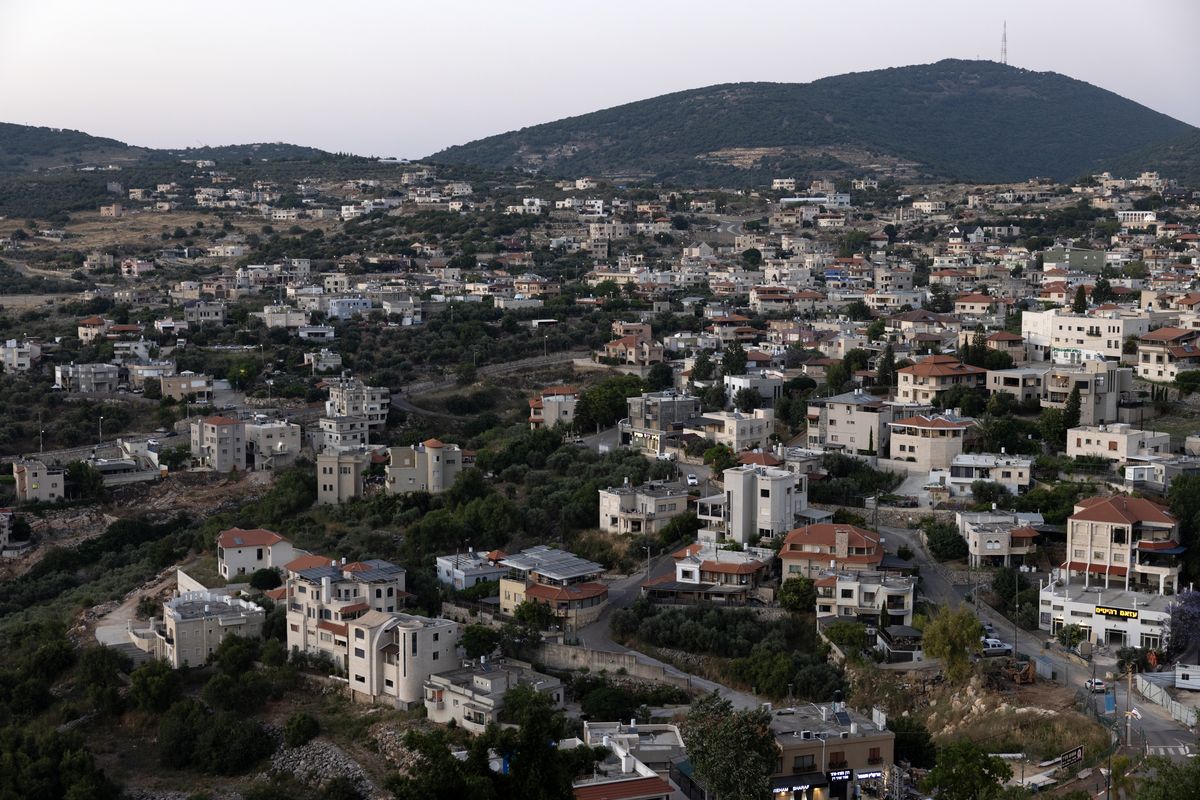On the Israel-Lebanon border, a war is unfolding in slow motion
Israeli military vehicles at a position in northern Israel near the Lebanese border on Thursday, a day after the Druze town of Hurfeish was rocked by a Hezbollah drone attack. MUST CREDIT: Heidi Levine for The Washington Post (Heidi Levine/FTWP)
HURFEISH, Northern Israel – The mountain villages and rolling valleys along Israel’s border with Lebanon already feel like a war zone.
The booms of intercepted rockets and drones regularly shake the air. Plumes of smoke rise from hillside explosions as firefighters race to keep blazes from engulfing residential neighborhoods. The pace of Hezbollah and Israeli strikes has grown from daily to almost hourly, according to the civilians, local officials and soldiers who remain in the area.
“Each week it’s becoming more frequent and more intense,” said Liron, the deputy commander of an army squad that was crowded into a shelter during an air raid alert Thursday. He spoke on the condition that he be identified by his first name because he was not authorized to talk to the media.
They were sheltering less than 3,000 yards from the Lebanese border, in an encampment they had used for months, on what had been the town’s soccer field.
Their location was no secret. A day before, a pair of pinpoint strikes by Hezbollah drones had destroyed one of their three canvas barracks, killing one soldier and wounding a dozen others. The walls of one bomb shelter were still spattered with blood where the unit’s medic had fought to save the arm of a young female reservist.
“There was no warning at all,” Liron said in the sweltering bunker. “Just boom.”
Most of his fighters had come north after being deployed inside Gaza. Now they are part of the growing Israeli force lining the border, waiting for a second full-scale conflict that feels more inevitable every day.
“The fog of war is growing around us,” Liron said, as more explosions echoed in the hills. “The situation is not bearable.”
Israel has fought two bloody, inconclusive wars, in 1996 and 2006, with Hezbollah – the Iranian-aligned militant group that is Lebanon’s most dominant military and political force – and the two sides have been exchanging fire since the Oct. 7 Hamas-led attacks on southern Israel.
The back-and-forth has ebbed and flowed without tipping into all-out war. An unprecedented Iranian missile attack on Israel came and went, as have numerous failed rounds of regional diplomacy. Hezbollah has said it will not stop fighting until there is a cease-fire in Gaza.
As cross-border attacks have picked up, Israeli officials across the political spectrum have become more vocal about their willingness to push Hezbollah back from the border – even if it means intense fighting on two different fronts.
Herzi Halevi, the Israel Defense Forces’ top commander, said last week that a decision on whether to launch a full-scale attack was close. The head of the Northern Command said his troops were ready.
U.S. negotiators are trying to head off an escalation, but Israel is under growing domestic pressure to halt the Hezbollah launches and allow more than 60,000 displaced civilians to return to their homes after eight months of living in hotels and shelters around the country. A poll Friday by the Hebrew-language daily Maariv found that 62 percent of Israelis support the idea of a decisive attack on Hezbollah.
Announcing his departure from Prime Minister Benjamin Netanyahu’s war cabinet Sunday, moderate Benny Gantz said “a real victory” for Israel would mean bringing residents of the north home safely.
At least eight Israeli civilians and 19 IDF soldiers have been killed by Hezbollah strikes, officials said.
At least 87 civilians and nearly 300 Hezbollah fighters have been killed in Israeli strikes in Lebanon, according to a figures compiled by The Washington Post. The United Nations says more than 94,000 people in the country have fled their homes.
In Hurfeish, where more than 97 percent of the population are Druze Arabs who are citizens of Israel – many of whom maintain social media connections with Druze citizens of Lebanon and Syria – officials said they were resigned to war if it meant an end to the rockets and drones.
“I don’t see any political solution,” said Wael Amer, the village treasurer.
Amer was sitting in the town office, a few hundred yards from the site of Hezbollah’s drone attack Wednesday. On video monitors, he and other officials reviewed footage of panicked children running from the sound of recent explosions. Several of the town’s first responders were injured Wednesday when the second drone hit in the same place, 10 minutes after the first, a so-called “double strike.”
“They have us in their targets,” Amer said. “We are not safe here.”
On the desk sat a bent metal fin, debris from one of the killer drones. Army experts told village officials it was a type they hadn’t seen before, a sign of the widening arsenal Hezbollah has deployed along the frontier.
For months, the group relied mostly on drones and antitank missiles against targets close to the border. But in April, according to Hezbollah statements, the group deployed Iranian-made Almas 3 rockets, equipped with cameras that capture real-time footage of attacks that are then circulated on social media. Militants used antiaircraft missiles against Israeli aircraft for the first time Thursday, the group said.
U.N. Secretary General António Guterres has warned that the fighting is spinning out of control. “These exchanges of fire could trigger a broader conflict with devastating consequences for the region,” his office said in a statement Thursday.
Increasingly, Hezbollah weapons are penetrating Israel’s sophisticated air defense systems, reaching places where evacuated residents from the north have come for shelter. A drone on Friday struck an open field near Nazareth, almost 25 miles south of the border.
“We still hear the sirens and the bombs,” said Yochai Wolfin, manager of Manara, a kibbutz of about 280 people abutting the border fence with Lebanon.
A third of his town is staying in hotels in the north, but the rest have moved farther away. Some of the families have changed schools as many as five times since October. Their hopes of being back in Manara before the next academic year starts in September are fading. More than 70 percent of homes there have been damaged.
“Our community is spread all over the country,” Wolfin said. “It’s difficult not to be frustrated. Nobody talks to us about the future and what’s going to happen.”
Temperatures are rising along with the pace of attacks, making fires a growing hazard on both sides of the border. Rockets and drone strikes routinely ignite the drying brush, overwhelming fire departments that are already depleted of staff. The threat from ground-to-air missiles has grounded Israeli firefighting planes, leaving ground teams to battle the blazes alone, often as rockets fall around them.
“When there is a boom, you just lay on the ground and hope for the best,” said Sgt. David Rosenberg, part of a combined force of local and military firefighters who spent more than two days last week containing fires around Kiryat Shmona, a mostly evacuated hillside town of 22,000.
On one occasion, he said, his team ran into a public air raid shelter where they found an elderly resident living full-time with a cot, coffee maker and radio.
Rosenberg grew emotional Thursday at a location where they had arrested the flames at the town’s edge. Some structures were destroyed, but the blackened terrain ended just feet from a dense neighborhood.
“It was straight out of a horror movie,” he said, eyes welling. “You could hear animals screaming in the forest but you couldn’t do anything.”
In Hurfeish, the Druze village closer to the border, more residents have evacuated since the fatal attack Wednesday. Officials were in the process of moving about 70 orphans and foster children from a local care facility to shelters in Tel Aviv.
Still, only about 25 percent of people have left, and most would probably stay put, according to Shakeb Shanan, a local Druze leader.
“We have a belief that never mind where you will be, only God decides the place and time of your death,” he said. “It is better to stay and defend your home.”






